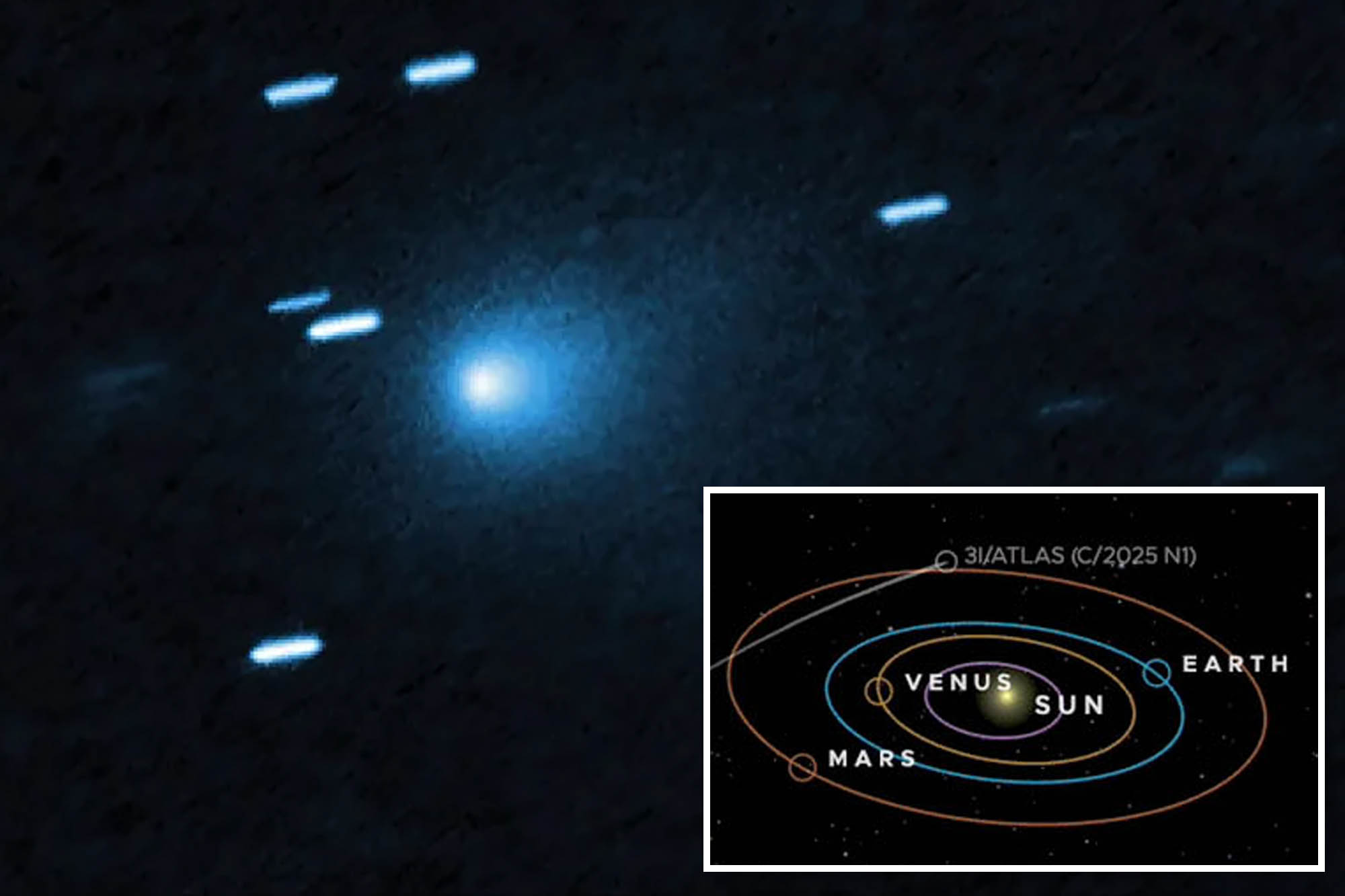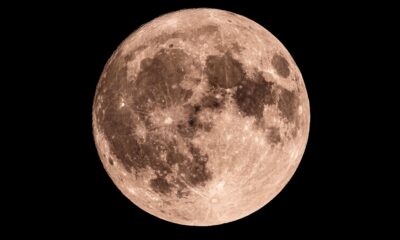Science
Interstellar Object 3I/ATLAS Shows Unusual Acceleration and Color Change

The interstellar object known as 3I/ATLAS has displayed unexpected characteristics, including non-gravitational acceleration and a distinct blue hue, as it passed near the Sun. These phenomena have prompted speculation from Harvard astrophysicist Avi Loeb regarding the possibility of an artificial origin, potentially suggesting it could be linked to an alien craft.
NASA recently reported that 3I/ATLAS accelerated without the influence of gravitational forces, indicating a significant outgassing event typical of comets. This process could result in the object losing approximately half its mass and generating a substantial debris plume in the coming months. Loeb proposed in a paper that the combination of acceleration and the object’s unusual color might point to an artificial propulsion system. He noted on Medium, “This might also explain the report on 3I/ATLAS getting ‘bluer than the Sun.’”
While Earth’s telescopes were unable to directly observe 3I/ATLAS during its closest approach—approximately 172 million miles from the Sun—spacecraft positioned ahead of Earth were able to capture data. The US Naval Research Lab documented a rapid brightening of the object, which appeared “distinctly bluer than the Sun.” This color change is particularly notable, considering previous observations indicated the object was red before shifting to green.
Upcoming Close Pass and Continued Observations
3I/ATLAS is anticipated to make its closest approach to Earth on December 19, 2023, passing at a distance of around 167 million miles. This event will present an opportunity for researchers on Earth to gather more data, potentially clarifying whether the object is indeed a comet or an artificial construct. Loeb stated, “If we do not observe a massive cloud of gas around 3I/ATLAS in December, it could be an indicator of a propulsion system.”
In the context of these developments, Loeb expressed his frustration with NASA for not releasing images from the Mars Reconnaissance Orbiter’s HiRISE camera taken during its close approach to Mars in early October. Sources indicated that these anticipated images will not be published until after the government reopens.
Navigating Speculation and Reassuring the Public
Despite the excitement surrounding 3I/ATLAS, NASA’s Acting Administrator Sean Duffy has attempted to mitigate fears about the object, asserting that it poses no threat. Duffy, who also serves as the transportation secretary, addressed concerns via social media, stating, “NASA’s observations show that this is the third interstellar comet to pass through our solar system. No aliens. No threat to life here on Earth.”
As the scientific community continues to analyze the data from 3I/ATLAS, it remains to be seen what further observations will reveal about this intriguing interstellar visitor. The upcoming close pass in December promises to be a key moment for understanding its true nature and origin.
-

 World2 weeks ago
World2 weeks agoGlobal Air Forces Ranked by Annual Defense Budgets in 2025
-

 World2 weeks ago
World2 weeks agoMass Production of F-35 Fighter Jet Drives Down Costs
-

 Top Stories2 weeks ago
Top Stories2 weeks agoNew ‘Star Trek: Voyager’ Game Demo Released, Players Test Limits
-

 Top Stories2 weeks ago
Top Stories2 weeks agoDirecTV to Launch AI-Driven Ads with User Likenesses in 2026
-

 Science2 weeks ago
Science2 weeks agoTime Crystals Revolutionize Quantum Computing Potential
-

 World2 weeks ago
World2 weeks agoElectrification Challenges Demand Advanced Multiphysics Modeling
-

 Lifestyle2 weeks ago
Lifestyle2 weeks agoLia Thomas Honored with ‘Voice of Inspiration’ Award at Dodgers Event
-

 Entertainment2 weeks ago
Entertainment2 weeks agoFreeport Art Gallery Transforms Waste into Creative Masterpieces
-

 Lifestyle2 weeks ago
Lifestyle2 weeks agoDiscover Reese Witherspoon’s Chic Dining Room Style for Under $25
-

 Health2 weeks ago
Health2 weeks agoGavin Newsom Critiques Trump’s Health and National Guard Plans
-

 Entertainment2 weeks ago
Entertainment2 weeks agoFast & Furious Coaster Hits the Track at Universal Studios
-

 Science2 weeks ago
Science2 weeks agoWaning Crescent Moon: What to Expect on October 17









